VISIT THE SURROUNDINGS
Discovering Umbrian surroundings
Bettona
The only Etruscan settlement on the eastern bank of the Tiber, it is one of the most beautiful villages in Italy with stunning views stretching over Perugia, Assisi and Spello. The historical center is completely surrounded by imposing walls, which were partly built over the original Etruscan walls. The Middle Ages can be found everywhere in Bettona: the Church of St. Crispolto, the Oratory of St. Andrea, the Collegiate Church of Santa Maria Maggiore are the oldest and most important monuments.
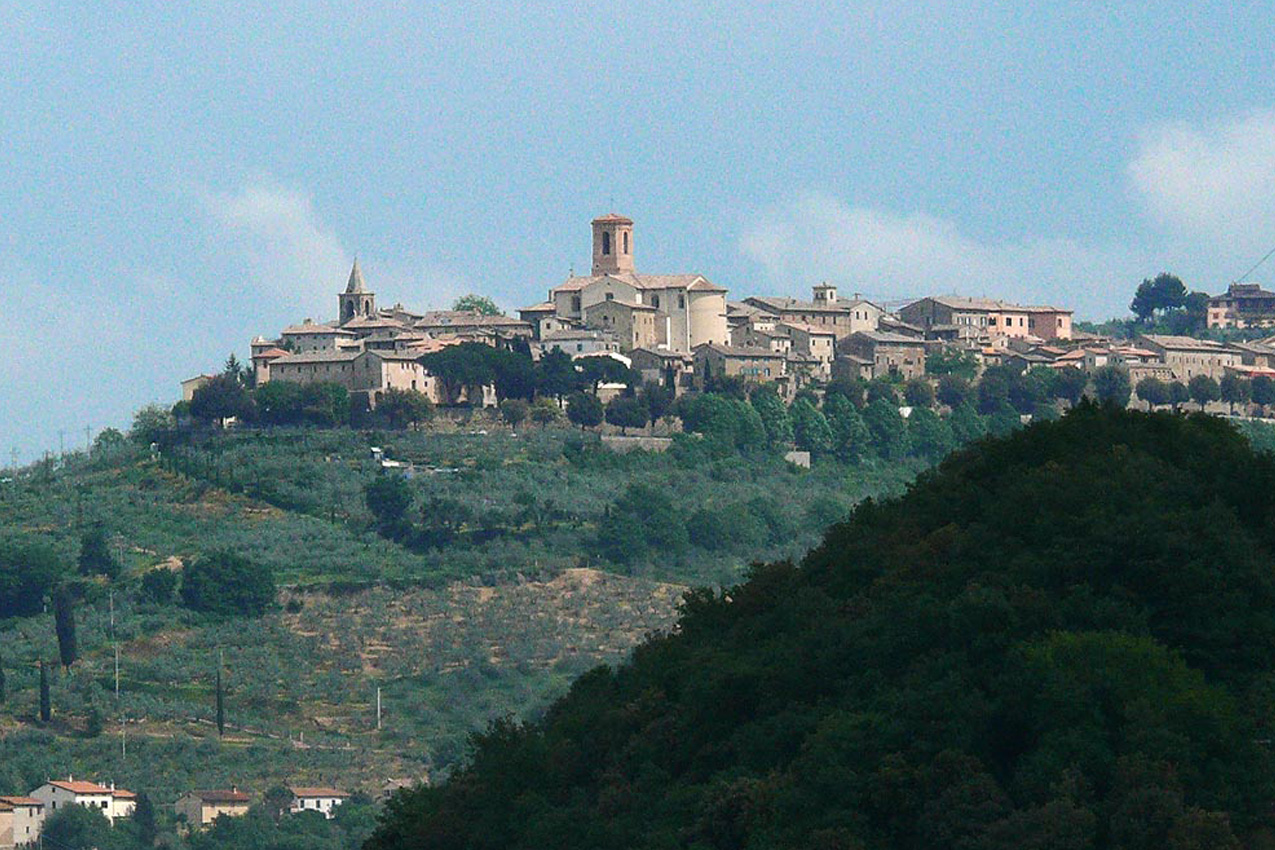
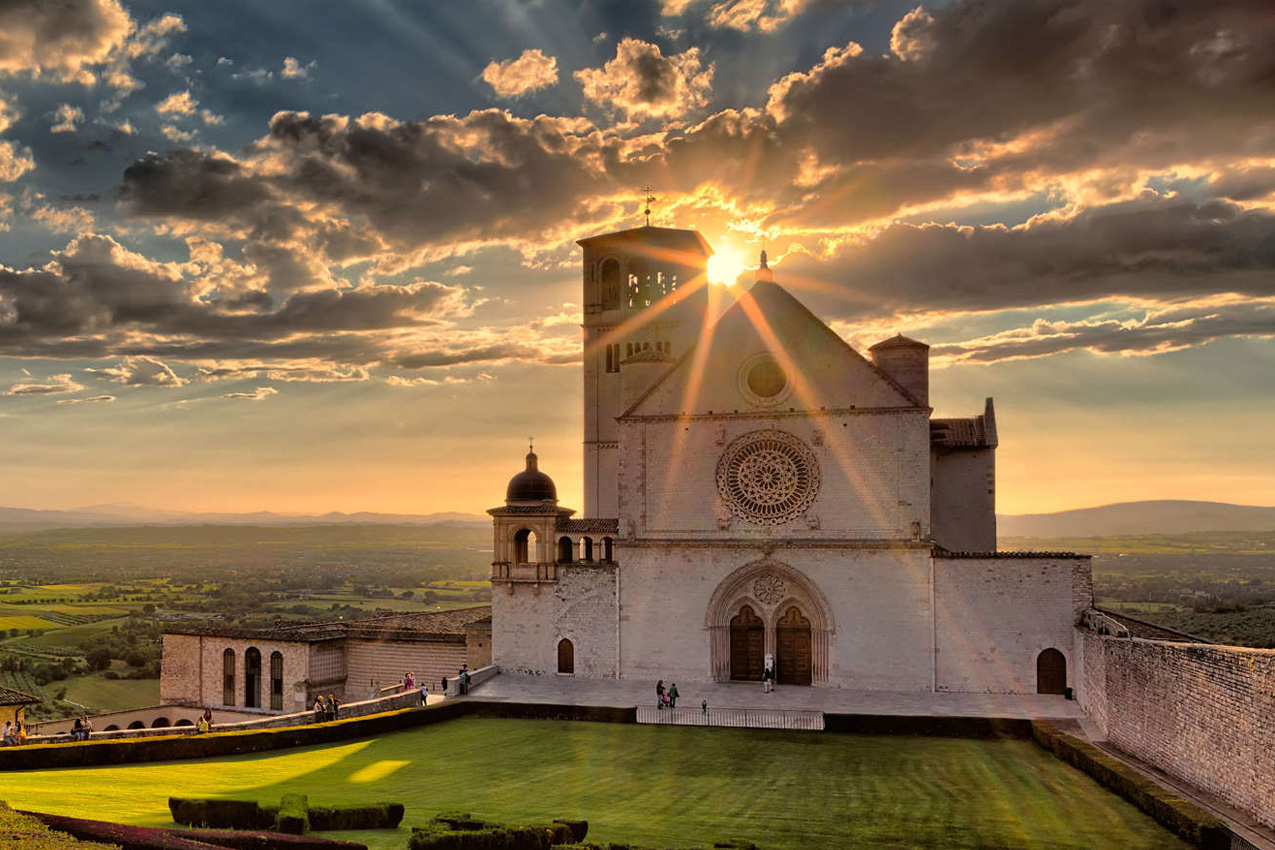
Assisi
One of the typical characteristics of Assisi is certainly its close bond with the church, nurtured and born around the figure of St. Francis, patron saint of Italy, and St. Clare, who lived and died in this town. No wonder then, that the churches dedicated to them, the Basilica of San Francesco d’Assisi and the Basilica of Santa Chiara, are considered as something more than mere places of worship or art: they are intimate and sacred places where you can breathe the most sublime spirit and religious nature.
Events:
‘IL CALENDIMAGGIO’ is the festival involving Assisi every year in the first week of May. The event brings back to life traditions and past customs: everything is centered on the courteous challenge between the inhabitants of the upper and lower areas of Assisi, through the performance of recited medieval scenes, processions in costumes and musical performances.
Spello
Spello, situated on a spur of Mount Subasio, includes the greatest number of Roman remains in the area: from the city walls to the beautiful gates of the Augustan Age. With its medieval buildings, churches, winding streets it is one of the most beautiful villages in Italy.
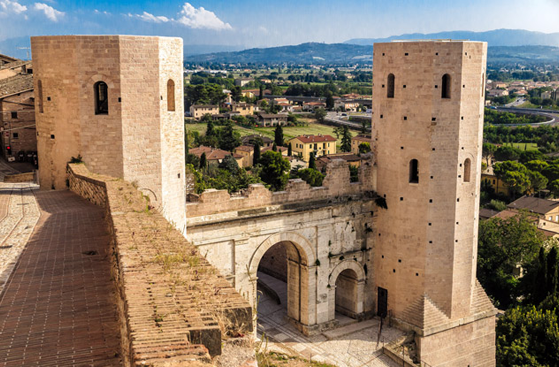
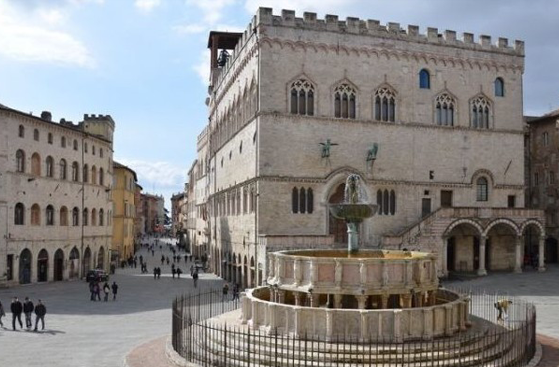
Perugia
The rich artistic and cultural heritage together with the surrounding natural environment make Perugia a unique city of primary importance, since the dawn of its history. Today Perugia is a modern, cosmopolitan city, known throughout the world for its artistic heritage, its cultural events and the University for Foreigners, present in the city since 1200.
Events:
Among the main events “UMBRIA JAZZ”, the most important jazz music festival in Italy and one of the best known in the world, every year in July since 1973. In October “EUROCHOCOLATE, a famous festival celebrating chocolate, with events, exhibitions, tastings, attracts gourmets from all over Italy. Finally, at the beginning of November, the historic “FIERA DEI MORTI“, existing since 1260, is a traditional appointment and gathering moment for the city and its inhabitants, but not only for them, so that in recent years the number of visitors has exceeded 150,000 units.
Bevagna
Visiting Bevagna means going back in time as it preserves its medieval charm thanks to the inhabitants who keep the ancient traditions alive through evocative historical re-enactments.
Events:
The ‘MARKET OF GAITE’, medieval historical re-enactment representing the daily life of the inhabitants of Bevagna between 1250 and 1350 with the greatest historical relevance. For ten days, at the end of June, Bevagna takes a dip into the past: the ancient shops of medieval crafts reopen their doors and resume their activities and the streets are populated with “bevanati” in period costumes living the everyday life of their ancestors, eating, working, playing just like them.
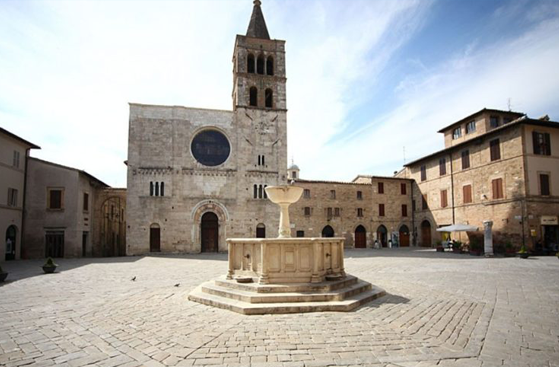
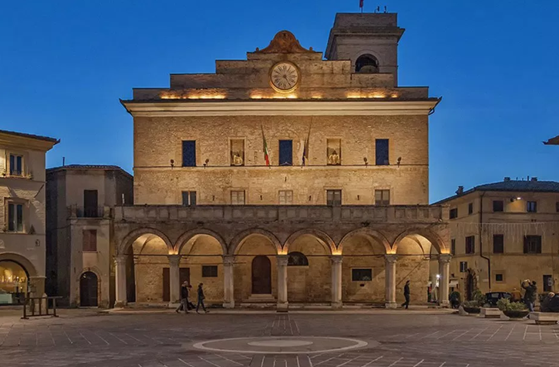
Montefalco
Thanks to its enchanting geographical position Montefalco is known as the “Balcony of Umbria”. From its belvedere you can admire the Umbrian centers of Perugia, Assisi, Spello, Foligno, Trevi, Spoleto, Gualdo Cattaneo, Bevagna and the wonderful hills covered with olive groves and vineyards. The splendid medieval walls with imposing doors, frame a small and enchanting village.
Events:
‘LA FUGA DEL BOVE’, a tradition of Montefalco held every year that turns the main square into an open-air theater with the show of the “Quattro Quartieri”, Four Districts!
Gubbio
At the foot of Mount Ingino, Gubbio is one of the most ancient cities in Umbria, wonderfully preserved over the centuries and rich in monuments that testify to its glorious past. In blacksmith shops, around the town, incandescent materials are still hand-worked by beating them on the anvil.
Events:
The most important event is the “CORSA DEI CERI”, considered the oldest Italian folkloristic event and held every year on May 15th. It is so important that the three Ceri (huge wooden candles) of Gubbio have been chosen as the logo of the Umbria region.
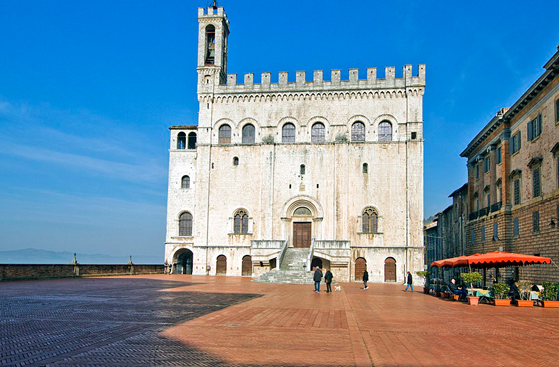
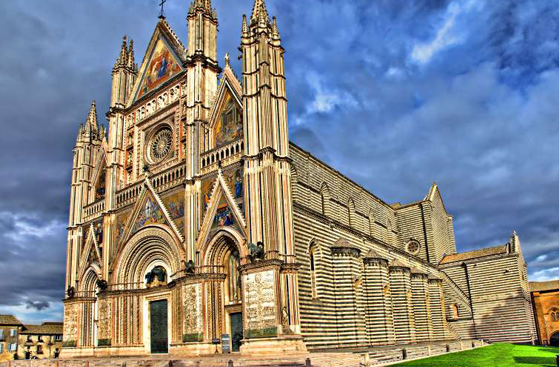
Orvieto
Orvieto, one of the oldest cities in Italy, owes its origins to the Etruscan civilization. The symbol of the city is the magnificent Duomo, Orvieto Cathedral, a colorful example of Romanesque-Gothic architecture, rich in works of art. The Underground City is also suggestive. It was entirely derived from the cavities dug by the inhabitants over the centuries, rich in wells and caves; the most famous is probably the Pozzo di San Patrizio (St. Patrick’s Well), an extraordinary work of civil engineering of the sixteenth century.
Events:
“FESTA DELLA PALOMBELLA” is celebrated on Pentecost Day in June in Piazza del Duomo. On this occasion a dove is made “fly”, tied to a crackling sunburst of firecrackers on a steel cable from St. Francis Church to the Duomo; the dove is then given to the first married couple on that day.
Lago Trasimeno
Surrounded by the green hills of Umbria, Trasimeno Lake is the fourth largest in Italy. On its shores there are villages of breathtaking beauty. The lake has also three suggestive islands: Isola Maggiore, the only inhabited with its windmill and the Church of San Michele Arcangelo, Isola Polvese, the largest, offering visitors beautiful views from the Rocca and finally Isola Minore, private and not open to visitors.
Events:
Nearly 60 km along the Trasimeno coasts, through the villages and landscapes of the Lake: this is the ‘STRASIMENO’, scheduled every year for March.
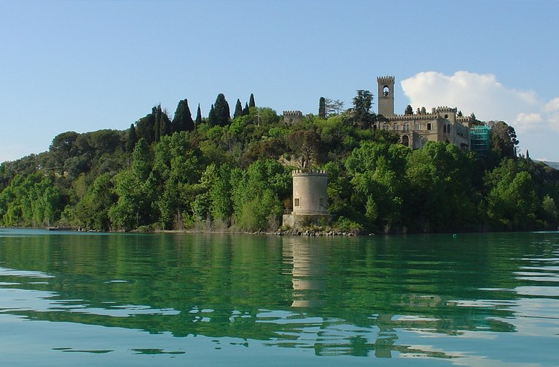
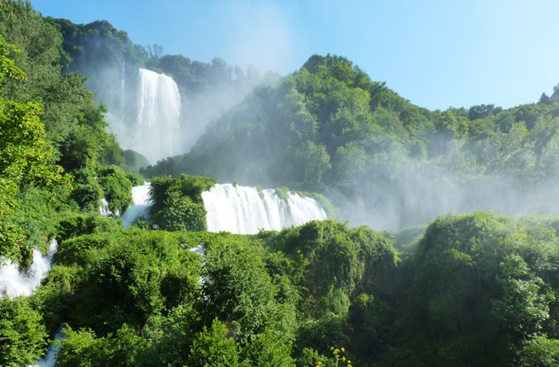
Cascata delle Marmore
The Cascata delle Marmore, one of the main natural attractions in Umbria, is an artificial hydraulic work due to the Romans; the waters of the Velino river, conveyed towards the Marmore cliff, make a total jump of 165 meters in the underlying bed of the Nera river. The spectacular jump of the Marmore Falls has inspired poets and artists of every historical period. For about 50 years the waters of the waterfall have been used to feed the Galleto hydroelectricplant. Consequently the waterfall can be admired only at certain times.
